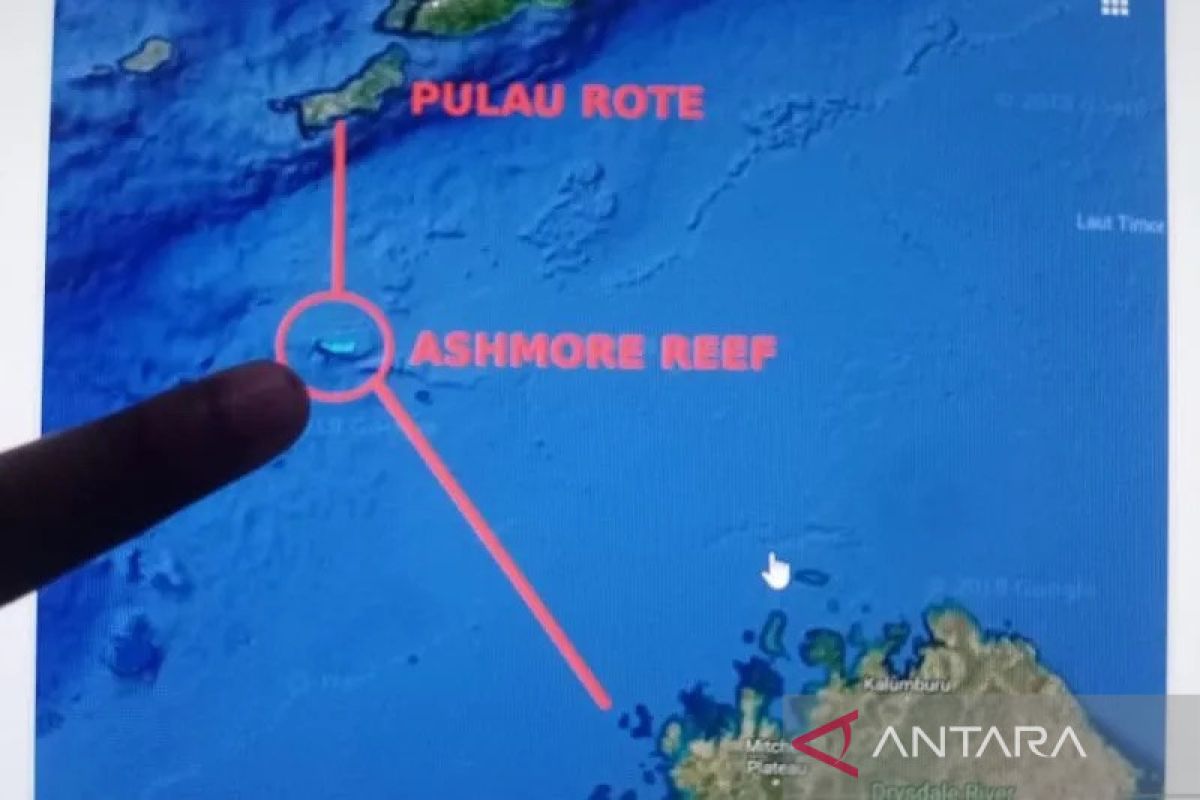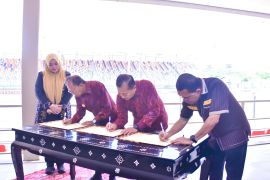This is because the polemic over the Sand Island Cluster is not as big as the Sipadan and Ligitan cases or the Ambalat Block, both of which involve Indonesia and Malaysia.
The Sand Island Cluster in Timor Sea is located 320 kilometers from the West-North coast of Australia, though only 140 km south of Rote Island, East Nusa Tenggara, Indonesia.
Based on pre-colonial history, the Sand Island Cluster, which is currently called Ashmore Reef, was actually an integral part of Indonesia.
This claim is indicated by the large number of traditional Indonesian fishermen, who have been fishing for a long time around the Sand Island Cluster to the mainland of Broome, Australia.
In addition, there are the graves of Rote ancestors and various other artifacts in the Sand Island cluster. The island is also used as a rest area by fishermen after a night of catching sea cucumbers and fish in the Sand Island waters.
Sand Island is often used as a transit point by Indonesian fishermen from other areas when they sail to the southern part of Indonesia, such as to the Rote Islands waters.
However, since a memorandum of understanding (MoU) between Indonesia and Australia was signed in 1974, Australia immediately claimed Sand Island as its property, causing a detrimental to Indonesia.
International law observer from Nusa Cendana University Kupang T.W. Tadeus considered that a mistake was committed on the part of the Indonesian Government in 1974 when the MoU was signed.
Related news: NTT to export 20 tons of groupers to Hong Kong
In the 1974 MoU, the Indonesian government sought Australia’s help to monitor Sand Island for conservation purposes.
“Indirectly, Indonesia also handed over the Sand Island to Australia. This has become a problem to this day," he pointed out.
In 1976, the Australian government claimed that Sand Island, which was included in the Indonesian territory, became its property. It was this claim that later became a prolonged polemic over the ownership of the island.
However, according to customs and traditions of the surrounding community, the people of NTT should still be able to access and tap into the potential of the sea around the island. However, based on data from the NTT Police, from 2004 to 2006, some three thousand NTT fishermen were arrested while entering the area.
The last incident occurred in 2021 when several fishermen were arrested and their boats were sunk by the Australian border police, as they were considered to have violated national boundaries and caught fish in the Sand Island waters.
The act of burning several Indonesian fishing boats infuriated Director General of Marine and Fishery Resources Supervision (PSDKP) of the Ministry of Maritime Affairs and Fisheries, Rear Admiral Adin Nurawaluddin.
In protest of this action, his side then canceled patrols with the Australian Border Force (ABF). This is because Minister of Maritime Affairs and Fisheries, Sakti Wahyu Trenggono, emphasized the importance of the state's role in controlling fishing vessels as an effort to maintain the sustainability of marine and fishery resources.
Related news: Foreign tourist visits to Labuan Bajo up in Aug: official
Oil and gas potential
Sand Island and the surrounding area are estimated to contain large amounts of oil and natural gas. Moreover, oil and gas exploration is found in that area.
Hence, the West Timor Care Foundation (YPTB) along with the Australian Jubilee Research Center in September 2022 urged the Australian government to immediately stop oil and gas drilling in the Sand Island waters.
They were concerned about a recurrence of the incidents that took place in 2009. At that time, the Montara oil refinery had exploded and destroyed hundreds of hectares of the fishermen's seaweed.
Moreover, the number of fish catches had decreased. Several fishermen and their children were injured and died as a result of being exposed to oil excessively flowing into the NTT waters.
Several areas, such as the Timor Sea and Sand Island waters, are also known to have natural gas and oil potential that is estimated to reach five million barrels.
The unilateral claim to Pasir Island by Australia is allegedly caused by the country’s aspirations to dominate oil and gas in the region.
Related news: BMKG cautions of extreme, long days without rain in NTT
This was proven after the MoU signing in 1974 when Australia moved quickly by cooperating with an Australian oil and gas contractor, Woodside, to research oil content in the area and then discover the potential.
The holder of the mandate for the customary rights of indigenous people in Timor Sea, including those in the Sand Island cluster, Ferdi Tanoni, urged the central government to seriously address the issue of maritime boundary lines on Sand Island, as the area is prone to disputes.
This is since the region's potential is able to support the country's economy, considering the fact that until now, the agreement signed since 1974 had never been re-ratified by Indonesia and Australia.
By controlling the Sand Island cluster, NTT Province has the opportunity to increase regional and state revenues based on its huge potential.
Tanoni then questioned the reason behind the government's deployment of several troops to defend the Ambalat case but decided to stay silent for the Sand Island case.
Hence, Commission I of the Indonesian House of Representatives and the Government should immediately take various diplomatic and legal efforts to regain the rights of the country that has been annexed by Australia.
Related news: Jokowi urges KADIN members to plant sorghum in NTT
The Australian government must be able to show proof of ownership of Sand Island to justify its claim. Until now, the evidence has never been shown.
The claim to the Sand Island cluster is contrary to the 1982 United Nations Convention on the Law of the Sea (UNCLOS). According to the convention, if the distance between two countries is less than 400 nautical miles, then the median line is used.
In reality, the distance between Australia, Timor Leste, and Indonesia is less than 400 miles. Thus, Indonesia should have equal rights in the Timor Sea.
Hence, Indonesia must do something to regain its rights to the Sand Island cluster. This case can be settled through court or arbitration.
This is in accordance with the result of the 1982 UNCLOS. The Sipadan-Ligitan case can be used as a basis guide for Indonesia to win the case.
The best medium for resolving this case is arbitration. In addition to being cost-effective, the arbitration process does not take too long but has an absolute and binding decision.
Related news: Wage subsidy aid reaches 23,058 beneficiaries in NTT
Related news: NTB, NTT named joint hosts of 2028 PON National Games
Editor: Fardah Assegaf
Copyright © ANTARA 2022












